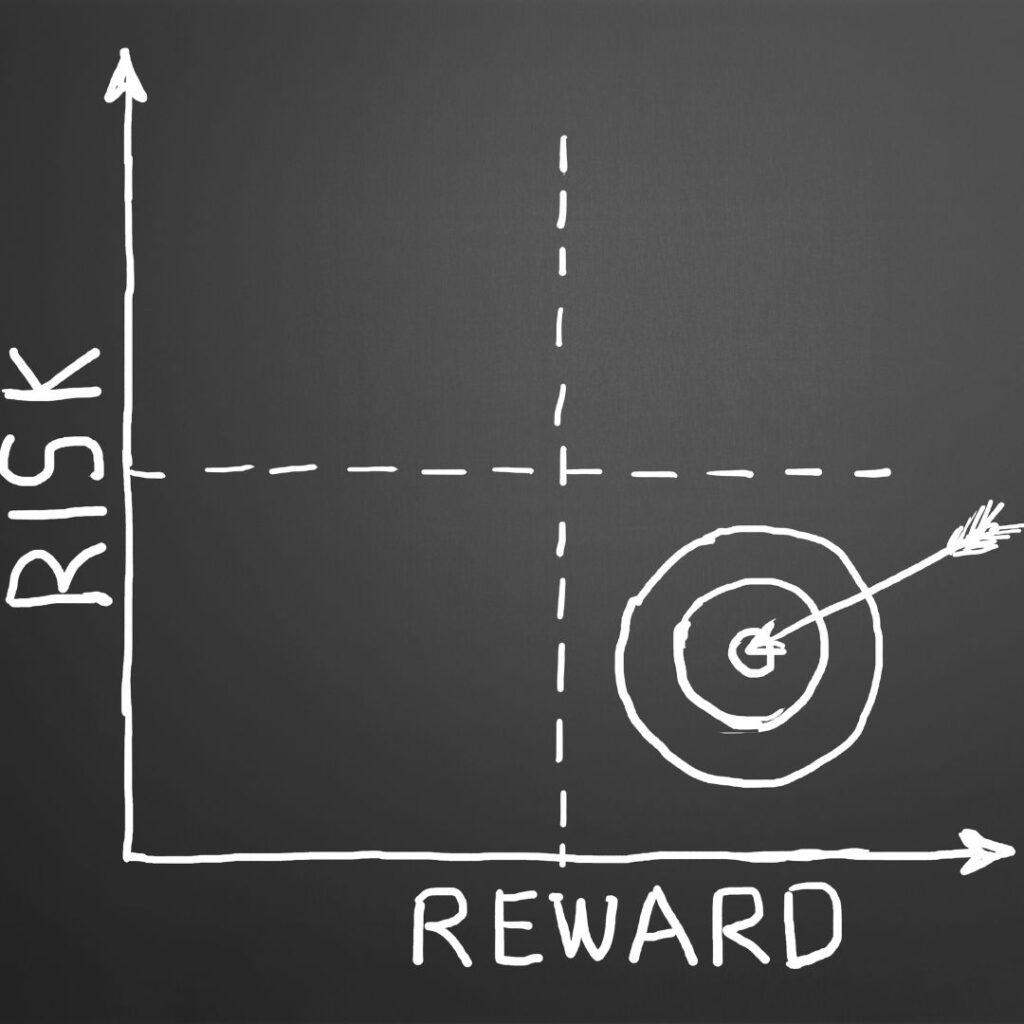Everyone has heard stories about an uncle or friend (usually a friend of a friend) that came up big investing in the hottest trend in the stock market. But what if I told you that you don’t need to be a stock guru or need to get lucky betting on the next Amazon, bitcoin or meme stock to build wealth in the market – would you be interested?
Well… I have good news for you! With an investment approach known as dollar-cost averaging, ANYONE can build wealth in the stock market no matter their income level, investing experience, or risk tolerance. All it takes to be successful with this easy-to-follow investing approach is time, consistency, and dedication to the process.
After reading this article about dollar-cost averaging, you’ll walk away with everything you need to know to begin building wealth today!
CONTENTS
What is Dollar-Cost Averaging?
Dollar-cost averaging (DCA) is an investment approach that aims to reduce the impact of volatility on your stock purchases. Basically, DCA removes the risk of you buying a stock at a premium (high) price and makes sure you have money to take advantage of the periodical dips in the market as well.
By investing the same amount of money consistently over time, the price that you pay per share will begin to average out – hence the name of the strategy. This happens because you end up purchasing more shares of a stock when its price drops, and less shares when the price rises.
So, instead of investing in a stock all-at-once, known as lump-sum investing, you are investing a fixed amount of money in the same fund or stock at regular intervals over a long period of time to reduce risk. If you participant in a 401k plan through your employer, it’s the same concept when the same amount of money is deducted from your pay check every month and invested into your 401k.
What Are the Pros and Cons of Investing with Dollar-Cost Averaging?
Dollar-cost averaging is arguably the best risk mitigating investment approach for building wealth in the stock market. But with all the different ways you can invest your money, why should you choose dollar-cost averaging? Quite frankly, DCA just offers the best-case scenario for investors in the stock market. But let’s breakdown the pros and cons so you can see so for yourself.
The pros of using dollar-cost averaging are:
- It’s easy to understand and follow. After you decide what you want to invest in, all you have to do is determine how much money you want to invest each week/month then automate your deposits so they occur at the same time, in the same amount, every month.
- You don’t need a ton of money to start. Since you don’t need to save up money for a big lump-sum investment, you can simply start with what you have, and what you can invest consistently.

- It reduces risk. With DCA you buy more shares when prices drop, and less shares when prices rise. This eventually smooths out the swings in the market giving you the average of the lows and highs.
- It removes emotions from your investing decisions. With DCA you can put your investing into auto-pilot so when the market takes a dip you don’t end up panic selling. In fact, you’ll end up buying more shares! With DCA, fluctuations in the market no longer concern you because they are part of your investment plan.
- It will keep you disciplined. Dollar-cost averaging will help you build the habit of investing regularly so you can build wealth over time.
The cons of using dollar-cost averaging to invest are:
- May underperform other investment approaches. Dollar-cost averaging mitigates risk by spreading your investments out over a longer period of time, but that means you’re not only buying a stock when they’re discounted, but also when they’re selling at a premium.
- You can miss out on big returns if a stock jumps up in price. Because you’re only investing a fix sum of money, you won’t be able to take full advantage when a stock unexpectedly drops in price due to external market conditions.

According to behavioral economists most people are inherently loss-averse – this means that they tend to react more strongly to losses than they do to gains.
The beauty of dollar-cost averaging is that by investing smaller sums of money over a longer period of time, it eases the pain when the market dips making it less likely you’ll panic sell.
So, while you may not be able to take full advantage of great buying opportunities, the fact that you can still get comparable returns while also mitigating the downside risk makes DCA a very compelling investment approach.
Why Should You Invest Using Dollar-Cost Averaging?
We already established that dollar-cost averaging is arguably the best risk mitigating investment approach for building wealth in the stock market. So how do you know if dollar-cost averaging is right for you? Well, check out some of these investor profiles to see if any of them describe where you’re at on your wealth building journey.
Are you new to investing? Dollar-cost averaging is the perfect way to start investing because you don’t need a big lump-sum of money to start, you don’t need investing experience, and you don’t need to worry about if you’re entering the market at the right time or not. With DCA you can start whenever you’re ready with whatever amount of money you have.

Are you a younger investor or have a long investment window? The key ingredient to dollar-cost averaging is time. DCA works best over a long period of time so you’re able to accumulate more shares during dips in the market so that you’re buying low so you can later sell high.
Do you have a low tolerance for risk? Dollar-cost averaging limits the possibility of you investing all your money at the peak of the market, right before a downturn, by spreading your investments out over a longer period of time (i.e., investing every week or month).
Are you uninterested in tracking the daily movements of the market every day? You don’t need to be an active trader or track the daily fluctuations of the market to win with DCA since you’re investing the same amount of money every month no matter what the market is doing.

These are just a few of the investor types that can really thrive under DCA. As long as you treat dollar-cost averaging as a long-term investing approach, you’ll perform just as well as other investment strategies without nearly as much inherent risk.
How Can You Build Wealth Using Dollar-Cost Averaging?
Now that we know why dollar-cost averaging is a great investment approach, lets discuss how you can use it to build wealth and what it looks like in real life. All that it takes to get started using dollar-cost averaging is to answer these three simple questions:
- What do I want to invest in?
- How much money do I regularly want to invest?
- How frequently do I want to invest and when?
Here is how I answered these three questions and made dollar-cost averaging work for me on my wealth building journey.
When I first began using dollar-cost averaging as part of my overall investment strategy, I decided to purchase low-cost index funds to build towards my financial goals. I choose index funds because they provided the diversification, exposure, and risk mitigation I was looking for without the need to do a ton of research and invest in hundreds of individual stocks. Also, by choosing a fund like the Vanguard S&P 500 ETF (VOO) that tracks the S&P 500, I was guaranteed the returns of the stock market which has a historical annualized return rate in the 9-10% range!
After I decided what I was going to invest in, I needed to decide how much money I wanted to dedicate to this investment approach. I budget 20% of my monthly income towards investing, and out of that 20% I decided to put 70% that towards purchasing index funds using dollar-cost averaging. For example, if I was investing $1k a month, $700 would’ve went into index funds using DCA. This allocation was based solely on my personal financial goals, so your allocation will look totally different than mine. The main point though was that I set a dollar amount that I could consistently invest over a long period of time.
“IF YOU LIKE SPENDING SIX TO EIGHT HOURS PER WEEK WORKING ON INVESTMENTS, DO IT. IF YOU DON’T, THEN DOLLAR-COST AVERAGE INTO INDEX FUNDS.”
Warren Buffett
Lastly, I choose to invest once a month and to automate my deductions. I choose an automated schedule to keep things simple and prevent any chance of me missing an investing period. I also know people who like to invest weekly because they like to monitor the activity in their portfolio more frequently. So no matter when, or how often you decide to invest, just make sure it’s a schedule you can stick to.
My example is just one way you can make dollar-cost averaging work for you to build wealth. Many people also use DCA for individual stock investing, building dividend portfolios, or even for day trading accounts – the possibilities are endless!
Conclusion
When it comes to building wealth, slow and steady wins the race! Dollar-cost averaging might not be the flashiest investment approach, but it’s a powerful tool with undeniable results that’ll help you achieve your wealth building goals.















